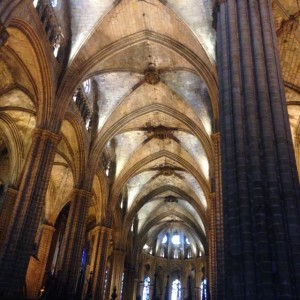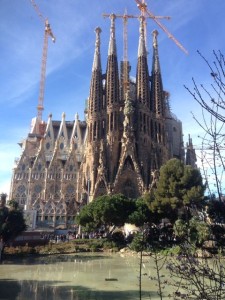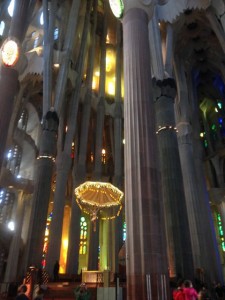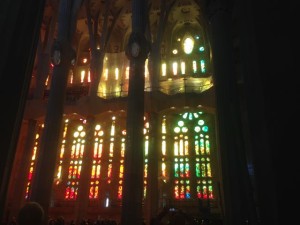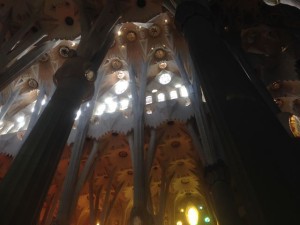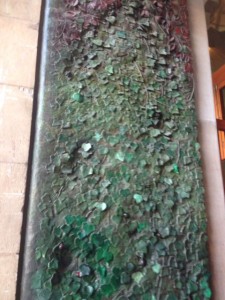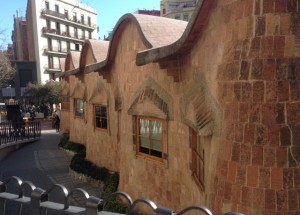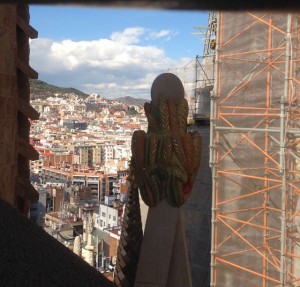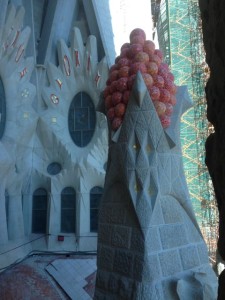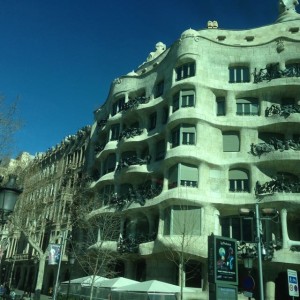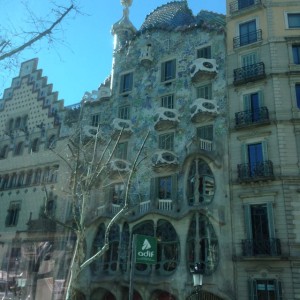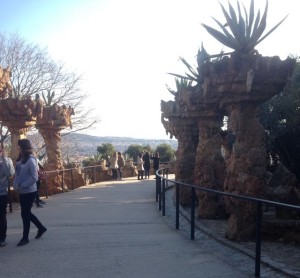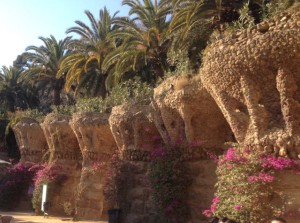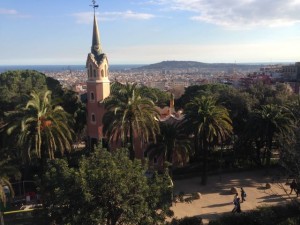This morning we toured the old Gothic section of the city and visited the Cathedral of Barcelona, which took over seven hundred years to complete.
The old quarter has narrow winding streets (some only a few meters wide).
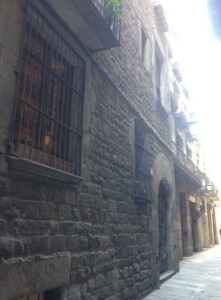 Many of the old buildings were destroyed in the 1755 Lisbon earthquake, but this wall, once part of an old synagogue, survives.
Many of the old buildings were destroyed in the 1755 Lisbon earthquake, but this wall, once part of an old synagogue, survives.
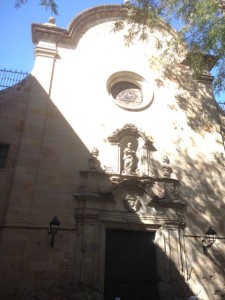
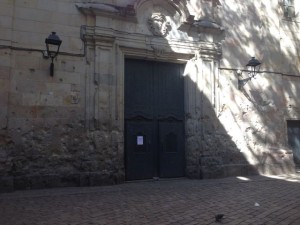 This tiny church in the Gothic section where Gaudi attended services each day, shows the shrapnel marks from the Spanish Civil War when Franco’s troops bombed the square, killing forty children on recess in the square.
This tiny church in the Gothic section where Gaudi attended services each day, shows the shrapnel marks from the Spanish Civil War when Franco’s troops bombed the square, killing forty children on recess in the square.
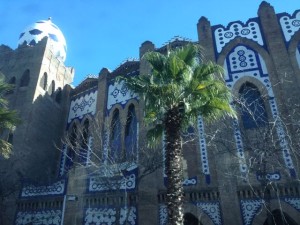 Barcelona’s second bullring (now used only for the occasional concert) is a fanciful blue and white creation.
Barcelona’s second bullring (now used only for the occasional concert) is a fanciful blue and white creation.
Gaudi’s most famous work is La Sagrada Familia, the basilica begun in 1882 in a Gothic style. Gaudi took over as architect at the age of thirty-one in 1883 and worked on the building until he died at the age of seventy-four after being struck by a tram as he walked to the tiny church in the old Gothic section where he attended mass every day.
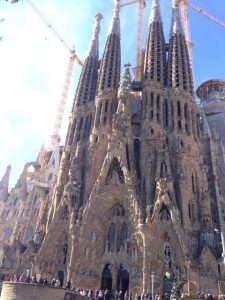
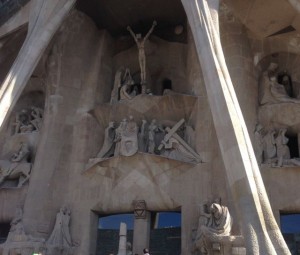 He died a pauper, having given all his money to the cathedral. As the story goes, when he was hit by the tram, he was mistaken for a beggar and taken to the old hospital, where he chose to die among the poor rather than be moved to the new hospital. In his lifetime he completed only the rear apse and one façade of the basilica.
He died a pauper, having given all his money to the cathedral. As the story goes, when he was hit by the tram, he was mistaken for a beggar and taken to the old hospital, where he chose to die among the poor rather than be moved to the new hospital. In his lifetime he completed only the rear apse and one façade of the basilica.
Today, the interior of the basilica with its modernist stained glass windows, fanciful columns, and several heavily ornamented facades have been completed. The facades are covered with highly symbolic ornaments and statuary
The basilica is due to be finished in 2026 after the construction of at least five more towers. At the Sagrada Familia web site, there is time laps video of the completion of the basilica.
During the Spanish Civil War, mobs stormed the basilica and destroyed Gaudi’s workshop with its drawings, models, and designs, and work did not begin again until well after the Civil War. Luckily, fragments were salvaged and Gaudi had lectured daily on his designs to the students of the school for the workers he established beside the basilica so future work was able to be carried out in accordance with Gaudi’s original plans.
The basilica is an expiatory basilica constructed completely from donations (and today the hefty entrance fee to the church, over 20E), so we consider that we have bought some pardon for our sins and have contributed to the construction of the Sagrada Familia. I would not recommend taking the elevator to the top, an extra fee, because there was very little view and you have to climb down a tiny dark circular staircase afterwards.
Other of Gaudi’s works are on display throughout Barcelona. He was commissioned by wealthy citizens (primarily Güell) to design houses (Casa Mila or Las Pedreras, 1906-1912), Casa Batllo (another fanciful house designed for a textile industrialist).
Park Güell, which was intended to be a housing development for which Gaudi designed the entrance, infrastructure, public spaces and several houses, but the development never materialized and the city bought the hilltop as a park.
 It is well known for its curvilinear mosaic benches, but the two layer stone walkways with their stone benches and massive overhead planters were a surprise.
It is well known for its curvilinear mosaic benches, but the two layer stone walkways with their stone benches and massive overhead planters were a surprise.
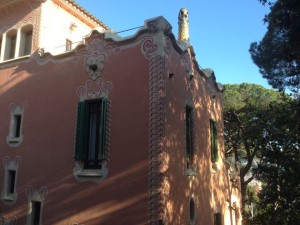
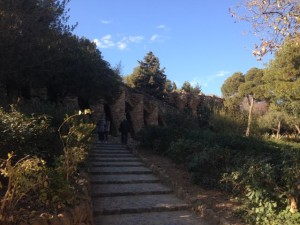 Classical groups played in the lower level of one of the arcades where the acoustics were magical. We took bus 24, which dropped us at the entrance, but we would have had to wait ½ hour to enter (+8E) and we were exhausted, so we decided to walk around the public area of the gardens and head back to our hotel.
Classical groups played in the lower level of one of the arcades where the acoustics were magical. We took bus 24, which dropped us at the entrance, but we would have had to wait ½ hour to enter (+8E) and we were exhausted, so we decided to walk around the public area of the gardens and head back to our hotel.




